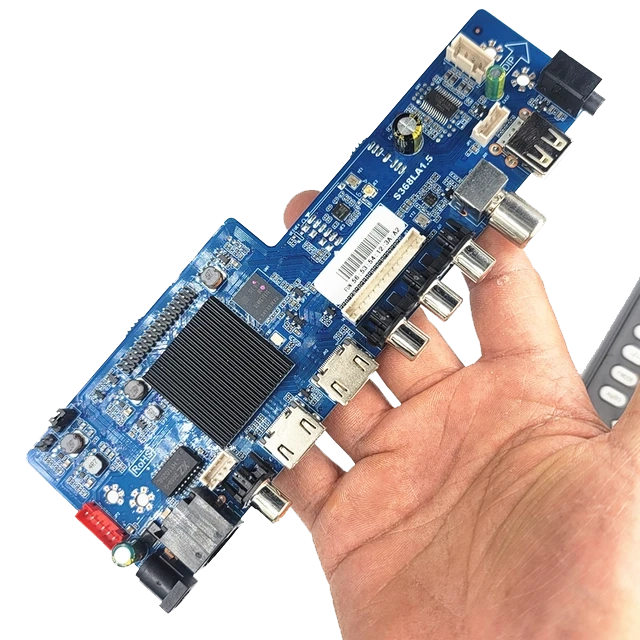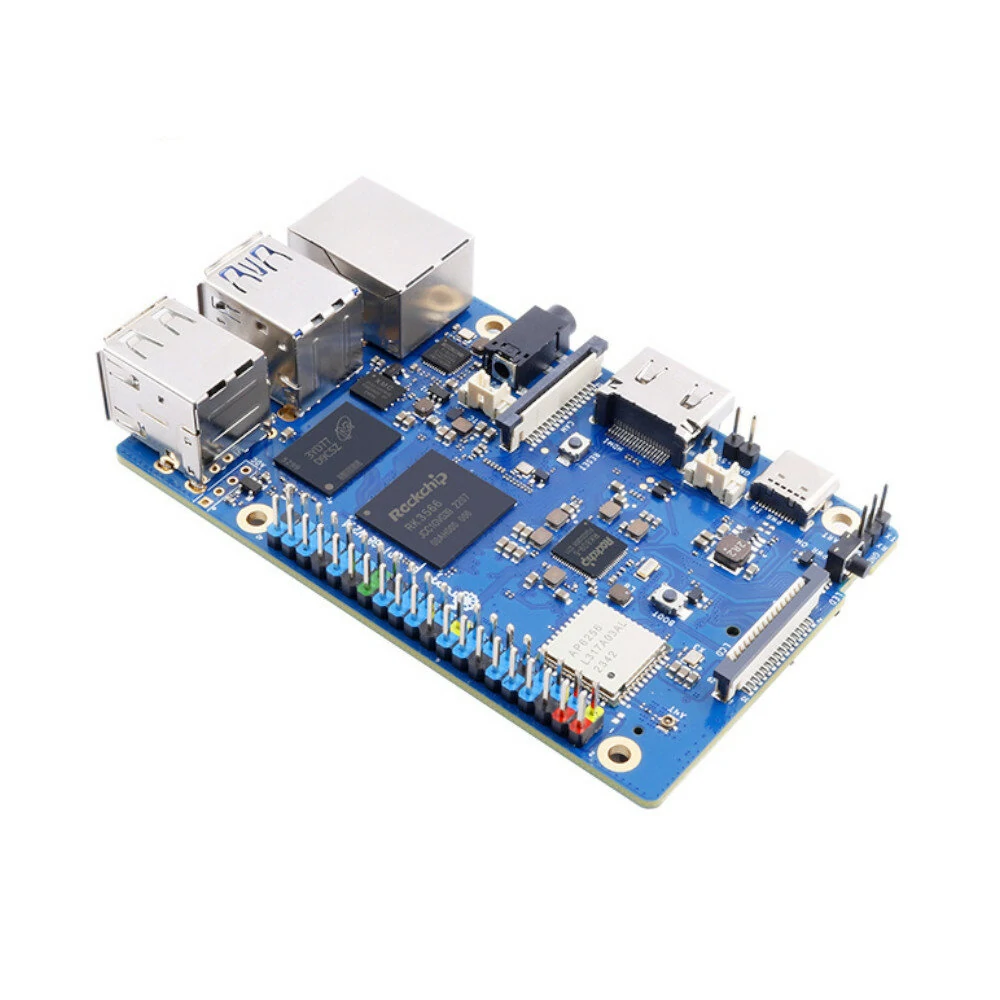Reliable and advanced How does an android sbc improve embedded system performance?

Embark upon the sector of Android application engineering for compact board computers. This thorough guide will arm you with the key concepts and real-world instructions to effectively program your own Android-fueled SBC initiatives. From mastering core pillars of Android construction to navigating the intricate world of SBC components, this guide will facilitate your a productive programming journey.
- Research the wide range of available SBC solutions and their distinct potentials.
- Attain expertise in essential Android building apparatus, including Android Studio, SDKs, and emulators.
- Absorb the intricacies of adjusting your SBC infrastructure for seamless Android execution.
Delve into best practices for formulating robust and responsive Android software tailored for SBC hardware constraints.
Designing Android Software Tailored for SBCs
Applying robustness of a Single Board Computer (SBC) for Android application design is an increasingly common approach. These compact and versatile appliances provide a cost-effective base for experimentation, enabling coders to harness the capabilities of Android without the need for a traditional machine. By leveraging the SBC's resources such as its processor, memory, and connectivity options, developers can create Android applications that range from simple utilities to more complex software. The competence to customize the hardware and software environment further improves the flexibility of SBCs for Android development, making them a indispensable tool for both enthusiasts.
Maximizing Android Dev Boards for Internet of Things
For budding innovators delving into the world of Internet of Things (IoT), Android dev boards present a efficient platform to bring their innovative ideas to life. These lightweight boards, often equipped with multifunctional hardware and user-friendly software development kits (SDKs), provide a sound foundation for prototyping a wide range of IoT devices. From home supervision systems to manufacturing monitoring tools, Android dev boards empower groups to develop cutting-edge IoT projects with speed.
- Making use of the extensive Android ecosystem, developers can engage a vast library of APIs specifically designed for IoT applications. This range of resources allows for optimized development and boosts the creation of innovative IoT solutions.
- As well, Android dev boards often feature integrated connectivity options such as Wi-Fi, Bluetooth, and cellular, facilitating seamless communication with other devices and cloud platforms. This connectivity capability is essential for enabling real-time data acquisition and remote monitoring of IoT applications.
- As a final point, the open-source nature of Android dev boards fosters a thriving ecosystem of developers, providing ample encouragement for tackling any challenges encountered during the development process.
Delving into Multimedia Applications Powered by Android SBCs
The domain of multimedia applications is constantly growing, pushing the boundaries of what's achievable. In this dynamic landscape, Android System-on-Chips (SBCs) have emerged as a powerful strategy for developers seeking to engineer innovative and engaging experiences.
The aforementioned compact yet loaded SBCs present a uncommon blend of processing performance, connectivity, and multimedia functions that make them suitable for a far-reaching collection of applications.
From high-definition video playback to direct audio processing, Android SBCs are prepared to handle the demands of today's multimedia landscape.
- What's more, their open-source nature permits developers to fine-tune hardware and software to address specific application conditions.
- The indicated level of versatility allows for developers to challenge the limits of multimedia innovation.
Unlock Personalization on Android Dev Boards
A development board exemplified by the Raspberry Pi or another Nexus Player grants a unique opportunity to tweak your Android experience. By experimenting with the underlying platform, you can revise everything from the kernel to dedicated programs. This level of control allows enthusiasts to test limits and formulate truly distinctive Android configurations. Whether you're hoping to improve your device's performance, uncover new possibilities, or simply resolve your curiosity, a dev board can unlock a world of potential.
- Get acquainted with the fundamentals of Android development
- Craft custom ROMs and kernels
- Trial new apps and features
- Combine your device to additional gadgets
Addressing Android SBC Malfunctions
When working with Android development on Single Board Computers (SBCs), you might encounter a variety of challenges. These can range from simple configuration errors to complex software bugs. Effective debugging and troubleshooting are crucial for identifying the root cause of these problems and restoring your Android environment to full functionality. Leverage the vast resources available online, such as forums and documentation, to gain insights into common issues faced by other developers in similar setups.
Start by carefully reviewing your event logs for any error messages or warnings that might provide clues about the problem. Integrate a detailed logging strategy within your Android application to capture relevant information during runtime. This can help pinpoint specific areas where errors are occurring. Don't hesitate to check different configurations and settings to see how they affect the behavior of your system.
- Commit time in understanding the hardware capabilities of your SBC, as limitations in processing power or memory can contribute to Android performance issues.
- Construct a strong understanding of the Android SDK and its features to effectively debug your applications.
- Stay updated with the latest versions of both Android and your SBC's firmware, as these often include bug fixes and performance improvements.
Optimizing Performance on Android SBCs
When operating Android-based system-on-a-chip small-scale computers, maximizing capability is paramount. To achieve this, developers and engineers can leverage a collection of techniques. This involves carefully refining software and hardware components to safeguard seamless running. Key areas for refinement include performance regulation, power consumption, network connectivity, and application functionality.
- Focusing on real-time information flow is fundamental for applications that demand immediate returns.
- Exploiting lightweight structures can notably reduce memory pressure, thereby boosting overall effectiveness.
Regularly maintaining the Android operating system and platforms is essential for addressing security weaknesses and accessing quality developments.
Implementing Android SBC Security Best Practices
Securing your Android platforms against threats is paramount. Implementing sound security best practices for your Android System-on-a-Chip (SBC) application can significantly mitigate risks. Regularly improve your SBC's software to address security flaws. Establish robust access protocols to regulate user permissions and network interaction. Conduct systematic security evaluations to identify potential concerns and execute necessary safeguards.
- Awaken your users about common security threats and best practices for protecting their devices.
- Encode sensitive data at rest and in transit using strong mechanisms.
By adhering to these best practices, you can create a more secure environment for your Android SBC.
Maximizing Potential with SBC Android Technology
The world of embedded Solutions (SBCs) provides a compelling platform for developing advanced Android applications. By fusing the power of Android with the unique capabilities of SBCs, developers can create advanced solutions across diverse sectors. This approach offers unparalleled flexibility and customization options, advancing the development of dedicated applications that cater to specific criteria. Whether it's for automotive systems, SBCs coupled with Android development open up a broad range of possibilities.
- Employing the low-power nature of SBCs for resource-constrained environments.
- Constructing Android applications with real-time responsiveness for time-sensitive tasks.
- Blending Android's user interface capabilities with custom hardware peripherals for a consistent experience.
The combination of Android and SBCs empowers developers to push the thresholds of innovation, resulting transformative applications that reshape various fields.
The Future of Android Development: SBCs Take Center Stage
The environment of Android development is rapidly evolving, with Single Board Computers (SBCs) emerging as a prominent force. These compact and versatile instruments offer developers a powerful platform for experimentation, prototyping, and even full-scale application deployment. With their affordability, expandability, and growing ecosystems, SBCs are poised to revolutionize the way we create Android applications. Builders are enthusiastically embracing this advanced paradigm, unlocking a world of possibilities for creating dynamic user experiences.
From embedded services to wired devices, SBCs provide the perfect platform for a wide range of Android projects. Applying the power of open-source software and hardware, developers can design innovative solutions that tackle real-world challenges.
Exploring Projects with Android SBCs
Android Single Board Computers (SBCs) are multifunctional little appliances that can be used to construct a wide range of applications. If you're a enthusiast, there are plenty of engaging project ideas to explore. One well-liked category is automated household solutions, where you can use an Android SBC to operate your electronics. You could also construct a custom media center, stream content on a larger screen, or even experiment with robotics and coding.
- Some Some Diverse sbc for android Certain
- Various other ideas include building educational games, implementing wearable technology, or even contributing to open-source frameworks. The possibilities are truly vast.
